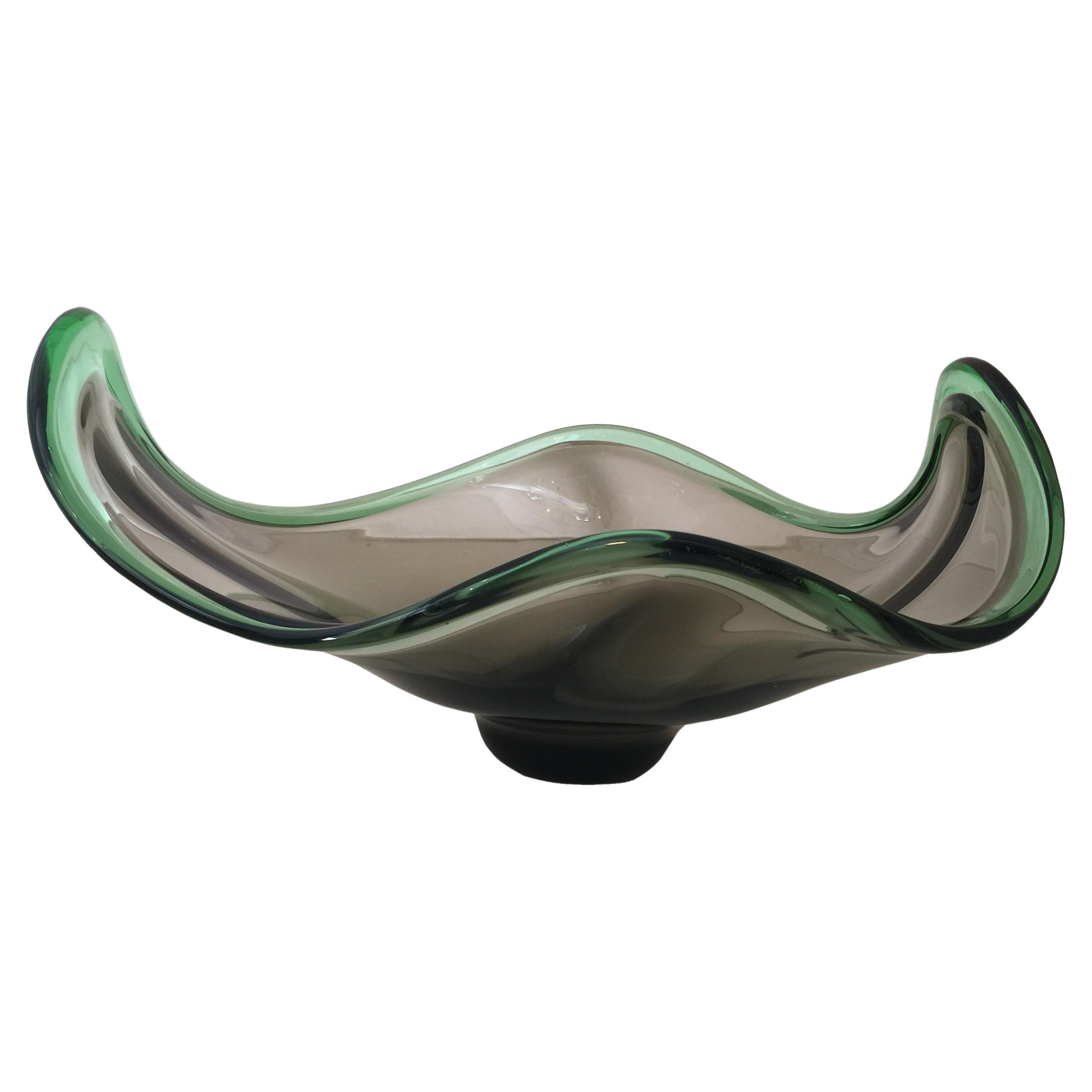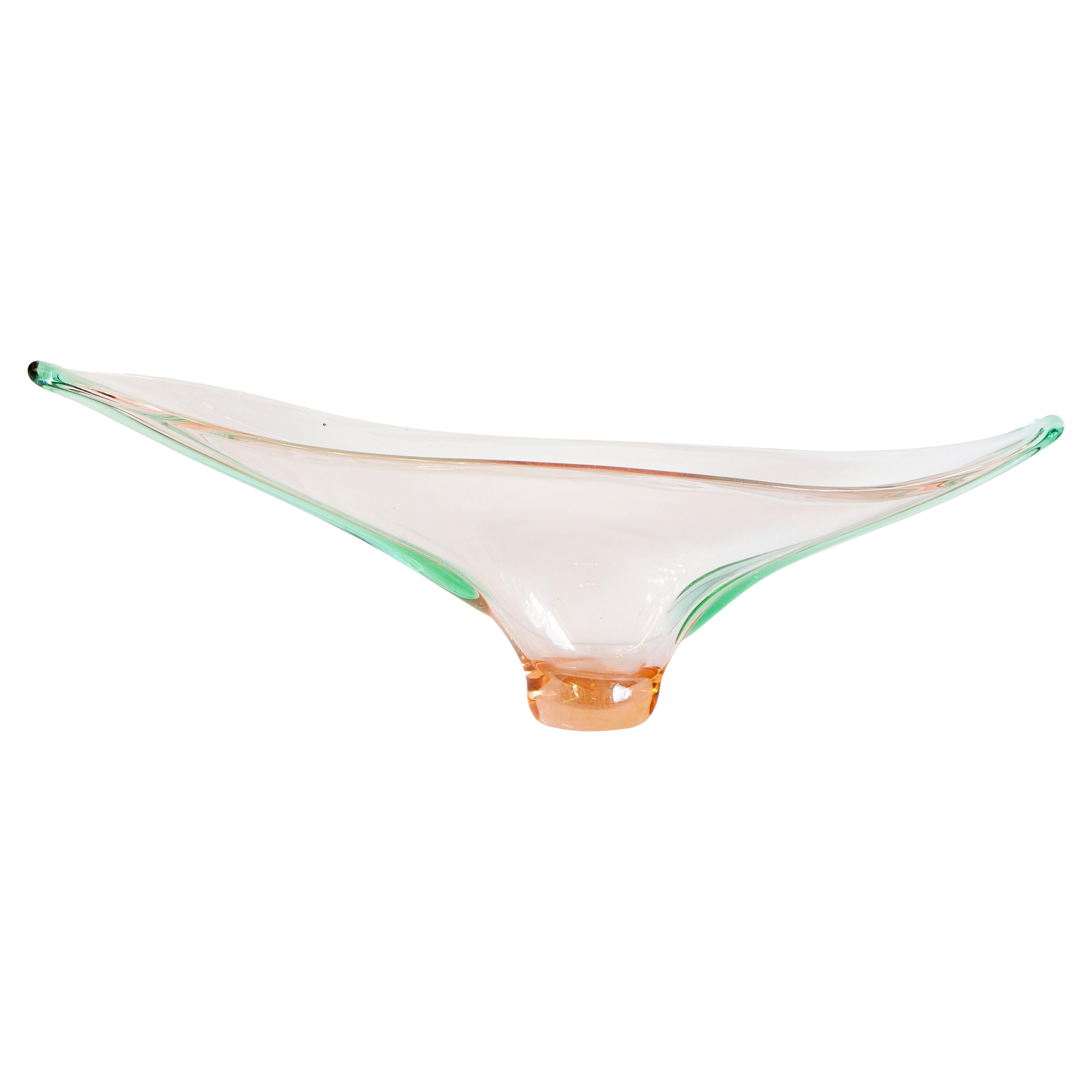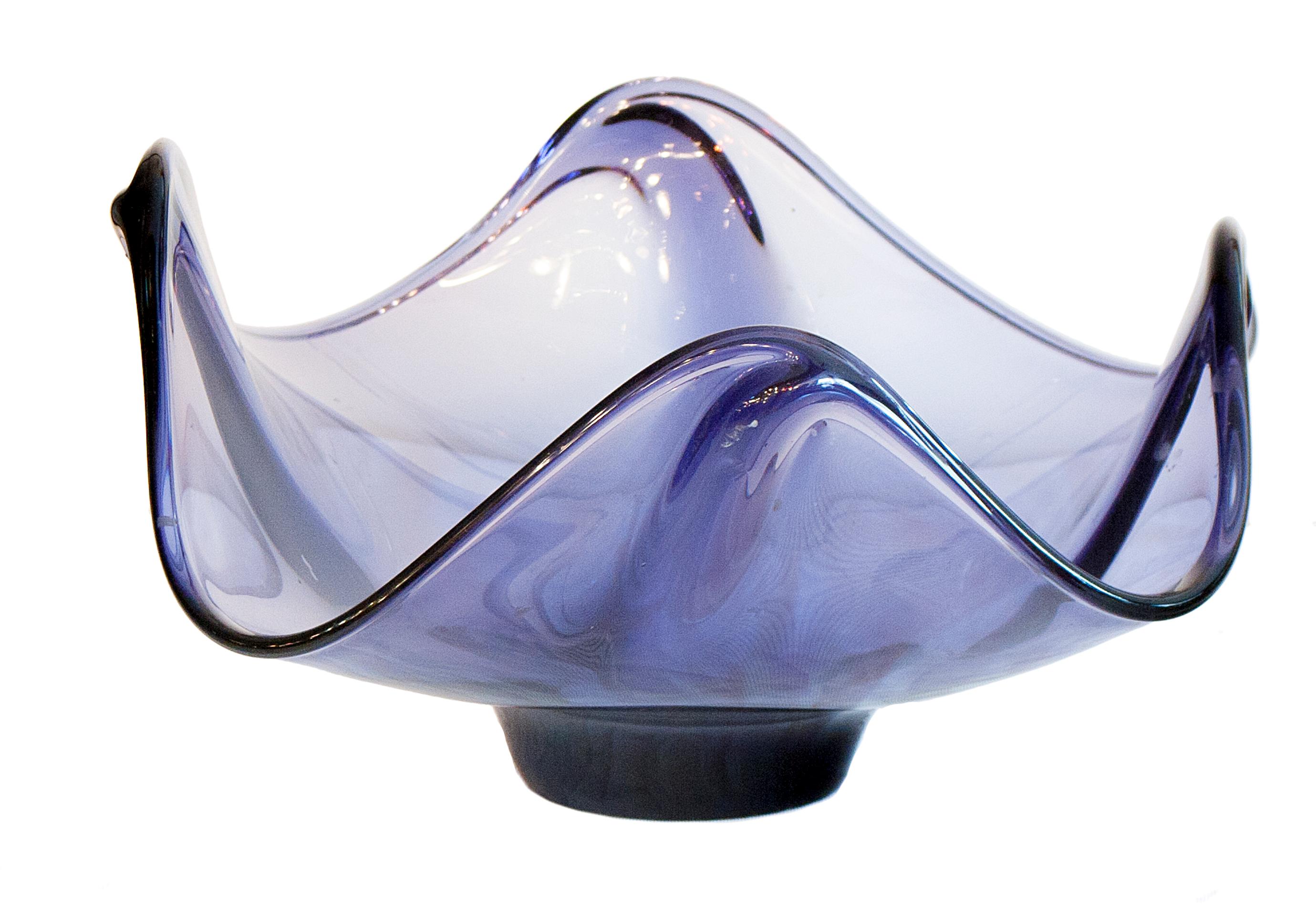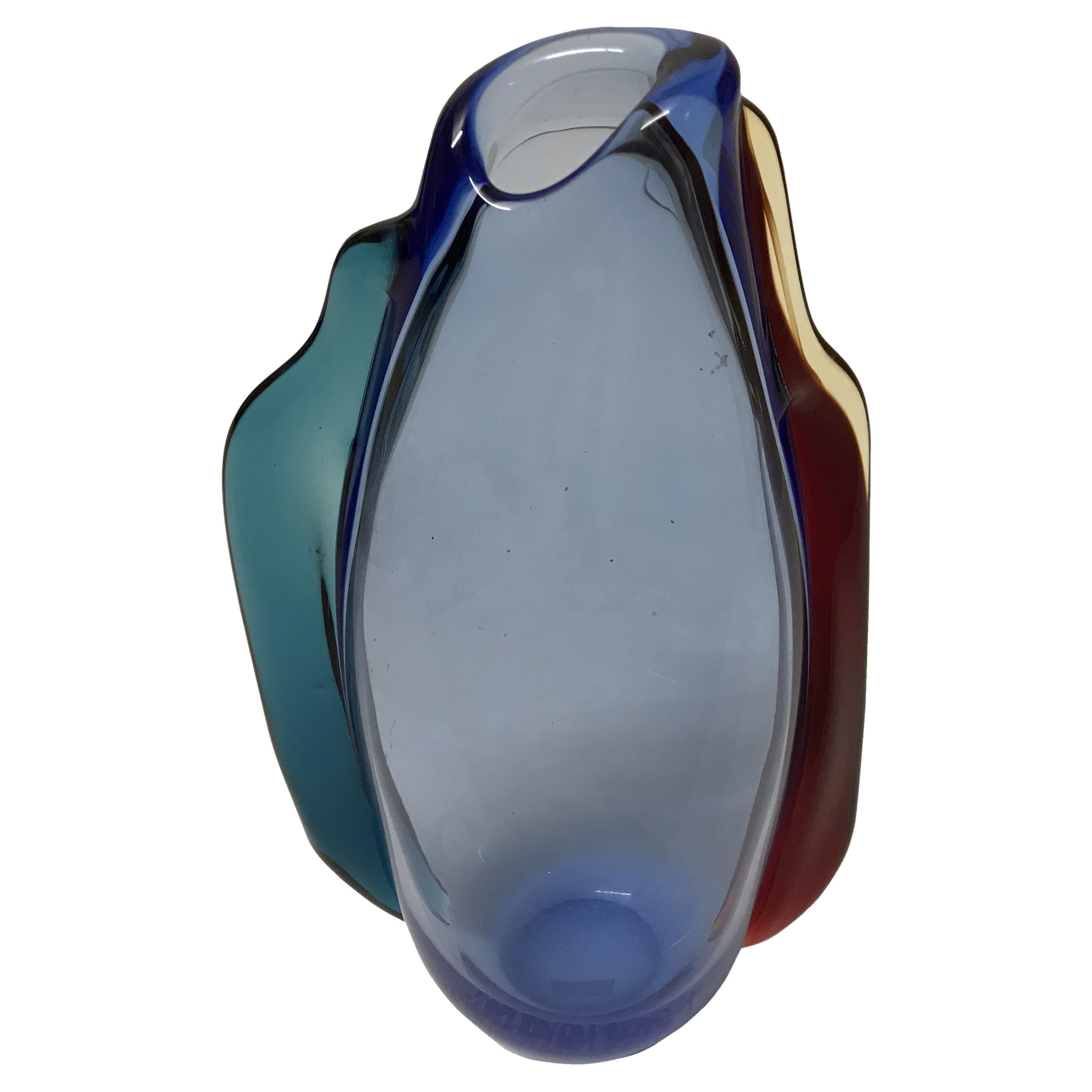Items Similar to Murano, 1940, Design Lucrecia Moyano
Video Loading
Want more images or videos?
Request additional images or videos from the seller
1 of 8
Murano, 1940, Design Lucrecia Moyano
About the Item
Murano
We have specialized in the sale of Art Deco and Art Nouveau and Vintage styles since 1982. If you have any questions we are at your disposal.
Pushing the button that reads 'View All From Seller'. And you can see more objects to the style for sale.
Art: Lucrecia Moyano
Lucrecia Moyano (Buenos Aires, 1902-1998) was a versatile artist, designer, and decorator, as well as a key figure of Argentine material culture due to her expertise in applied arts based on glass and textile design. Her pieces stand out for their decorative and practical elements. The mastery shown in her watercolor and oil paintings captivated Alejandro Bustillo and Louis Fourvel Rigolleau, among many others. Bustillo, the architect, hired her to produce pieces for the Llao Llao Hotel in Bariloche, while Rigolleau offered her the artistic direction of his company’s glass section, founded in 1882 and established in Berazategui. Moyano was the artistic director of the Rigolleau glass factory from 1934 to 1962.
In those 30 years, she exploited her creativity at an industrial scale by designing for mass production and creating unique pieces based on drawing, blown and carved glass techniques that used special pigments. Beginning in 1954, she designed fabrics for the firms Dandolo y Primi and El Espartano, while decorating emblematic buildings –such as Harrods department store, the headquarters of the Rural Society of Argentina, and the Plaza Hotel– with her unique style. Her pieces, renowned in Europe and the United States, were exhibited at the Universal Exposition in Paris (1937), the World Fair in New York (1939), the Modern Art Museum in Rio de Janeiro (1957), the New York Metropolitan Museum (1959), and the Smithsonian Institute in Washington (1959). The exhibition “Lucrecia Moyano, a life devoted to glass and textiles” was showcased in 1994 at the National Museum of Decorative Arts. IDA Foundation preserves and protects glass pieces and sketches of Moyano’s textile designs, settings, and glass art in one of the least explored collections within the field of Argentine material culture.
Why are there so many antiques in Argentina?
In the 1880 – 1940 there was a grate wave of immigration encouraged by the periods of war that were taking place.
1st World War took place between 1914 and 1918
2nd World War took place between 1939 and 1945
The immigrants options were New York or Buenos Aires. Tickets were cheap and in Buenos Aires they were welcomed with open arms, as it was a country where everything was still to be done.
Argentina was the country of new opportunities, labour was needed and religious freedom was assured, in many cases the of the family travel first until they were settled and then the rest of the family members join them.
In the immigrant museum “Ellis Island Immigrant Building” in New York you can se the promotional posters of the boats that would take them to a new life.
Between the years 1895 and 1896, Argentina had the highest DGP (gross domestic product) per capita in the world according to the Maddison Historical Statistics index, this situation arose due to the large amount of food being exported to European countries, which were at war.
The Argentinean ships left the port of Buenos Aires with food, but they returned with furniture, clothes and construction elements, (it´s common to see this the old buildings of the historic neighbourhood of San Telmo, the beams with the inscription “Made in England)”, as well as many markets that were built in Buenos Aires, such us the San Telmo Market, whose structure was brought by ship and afterwards assembled in 900 Defensa Street.
With the great influence of European immigrants living in the country, the children of the upper classes travelled to study in France, resulting in the inauguration of “La Maison Argentinienne”, on 27th of June 1928, in the international city of Paris, which hosted many Argentinians that were studying in Frace.
It´s the fourth house to be built after France, Canada and Belgium, being the first Spanish-speaking one. Still in place today (17 Bd Jourdan, 75014, Paris, France). Many of the children of these wealthy families who attended international art exhibitions, museums and art courses abroad, took a keen interest in the European style. This is why Buenos Aires was at the time referred as “The Paris of South America”.
Between the years 1890 and 1920 more than a hundred Palaces were built on Alvear Avenue the most exclusive avenue in Buenos Aires. Today some of these palaces have been transformed into museums, hotels and embassies.
In the year 1936, the Kavanagh building was inaugurated, it was the tallest reinforced concrete building in South America.
During 1994 the American Society of Civil Engineers distinguished it as an “international engineering milestone”, and it´s now considered a World Heritage of Modern Architecture.
At the time was common to hire foreign architects such as Le Corbusier, who visited Buenos Aires/Argentina in 1929 and in 1948 he drew up the blueprints for a house built in La Plata City (which was declared a World Heritage Site).
In 1947, the Hungarian architect Marcelo Breuer designed “Parador Ariston” in the seaside city of Mar del Plata. After an Argentinean student at Harvard University convinced him to come to Argentina. He worked on an urban development project in the Casa Amarilla, area of La Boca.
The Ukrainian architect, Vladimiro Acosta, arrives in Argentina in 1928 and worked as an architect until que moved to Brazil.
Antonio Bonet, a Spanish architect who worked with Le Corbusier in Paris, arrives in Argentina in 1937, where he carried out several architectural works and in 1938 designs the well-known BFK chair.
Andres Kálnay, of Hungarian origin, made around 120 architectural masterpieces, among which the former Munich brewery stands out, he even made the furniture’s design.
The German architect, Walter Gropius, director of the Bauhaus, lived in Argentina, where he wrote articles for “Sur” magazine and founded in Buenos Aires, an architectural firm with Franz Möller, who was also an architect, where he built two houses.
At the same time several famous designers decided to immigrate to Argentina, among them we can find the well-known French designer, Jean-Michel Frank, who arrived in the country in 1940 and also worked for the Rockefeller family.
Special pieces were made, which were sold exclusively in the country, such as the well-known German company “WMF”, who sold their products by catalogue, which were chosen by the ladies of high society in the list of wedding gifts, as well as the pieces designed by Christofle.
The Swiss sculptor Alberto Giacometti, made special pieces for Argentinean mansions.
In 1904 the first Jansen branch outside Paris was established in Buenos Aires, as the Argentinean clientele demanded a large amount of furniture, from the end of the 19th century to the mid-20th century.
In 1970, the brand Rigolleau Argentina made pieces authorised by Lalique.
The brands Maple and Thompson also set up shop in the country.
The French plastic artist, Marcel Duchamp moved to Argentina in 1918-1919.
Glass signed Gallé, Charder, Leverre, Schneider, Muller and other French firms. They were bought in flower shops and were given to ladies with beautiful floral arrangements.
Some furniture manufacturers travelled to international fairs and bough the patterns to produce the furniture in Argentina, such as the furniture firm Englander and Bonta, who bought the patterns ins Italy.
It is worth mentioning that in Argentina we have the largest community of Italians outside of Italy, as it is estimated that 70 percent of the inhabitants have at least one Italian descendant, followed by Spanish immigrants.
The most Important furniture stores in Argentina:
Comte is founded in 1934 (under the direct management of Jean Michel Frank in 1940).
Nordiska (Swedish company established in 1934).
Churba in 1960, a company that brought foreign designers to present their furniture in the country:
Denmark: (Arne Jacobsen, Finn Juhl, Bender Madsen, Ejner Larsen, Poul Kjaerholm, Hans Wegner)
Sweden: (Hans Agne Jakobsson, Gustavsberg)
United States: (Herman Miller)
Finland: (Lisa Johansson, Folke Arstrom, Tapio Wirkkala, Alvar Aalto, Timo Sarpaneva)
Swedish Factory: (Orrefors)
Italy: (Littala, Vico Magistretti, Emma Gismondi, Gae Aulenti, Angelo Mangiarotti, Elio Martinelli, Gianna Celada, Angelo Mangiarotti, Mario Bellini, Carlo Scarpa)
Finland: (Olivia Toikka)
Plata Lappas (Lappas Silver): a goldsmith shop founded in 1887 in Argentina by Alcibiades Lappas of Greek origin.
In 2019, in Argentina took place “the Art Deco world congress”, in which we participated as hosts invited by Geo Darder, founder of the Copperbridge – Foundation, in which prominent people from all over the world attended to learn about Art Deco in Argentina.
Argentina currently has more than 100 Art Deco buildings and another 90 Art Nouveau buildings throughout the city of Buenos Aires.
Argentina is a country that has not been involved in many wars, which is why it has been a refuge for works of art and antiques from different periods of time, unlike European countries. That is way many collectors, museums and antique dealers from all over the world visit it, you should not miss the opportunity to visit this great country.
Laura Guevara Kjuder, architect.
- Dimensions:Height: 5.12 in (13 cm)Width: 8.67 in (22 cm)Depth: 7.09 in (18 cm)
- Style:Art Deco (Of the Period)
- Materials and Techniques:
- Place of Origin:
- Period:
- Date of Manufacture:1940
- Condition:Wear consistent with age and use.
- Seller Location:Ciudad Autónoma Buenos Aires, AR
- Reference Number:1stDibs: LU6785231991942
About the Seller
5.0
Vetted Seller
These experienced sellers undergo a comprehensive evaluation by our team of in-house experts.
Established in 1982
1stDibs seller since 2022
21 sales on 1stDibs
Typical response time: <1 hour
- ShippingRetrieving quote...Ships From: Ciudad Autónoma Buenos Aires, Argentina
- Return PolicyThis item cannot be returned.
More From This SellerView All
- Murano, 1940, ItalianLocated in Ciudad Autónoma Buenos Aires, CMurano We have specialized in the sale of Art Deco and Art Nouveau and Vintage styles since 1982. If you have any questions we are at your disposal. Pushing the button that reads 'V...Category
Vintage 1940s Italian Art Deco Vases
MaterialsMurano Glass
- Murano , 1940, Italian.Located in Ciudad Autónoma Buenos Aires, CMurano We have specialized in the sale of Art Deco and Art Nouveau and Vintage styles since 1982. If you have any questions we are at your disposal. Pushing the button that reads 'V...Category
Vintage 1940s Italian Art Deco Vases
MaterialsMurano Glass
- Murano , 1940, Italian.Located in Ciudad Autónoma Buenos Aires, CMurano We have specialized in the sale of Art Deco and Art Nouveau and Vintage styles since 1982. If you have any questions we are at your disposal. Pushing the button that reads 'V...Category
Vintage 1940s Italian Art Deco Vases
MaterialsMurano Glass
- Murano, 1940, ItalianLocated in Ciudad Autónoma Buenos Aires, CMurano We have specialized in the sale of Art Deco and Art Nouveau and Vintage styles since 1982. If you have any questions we are at your disposal. Pushing the button that reads 'Vi...Category
Vintage 1940s Italian Art Deco Vases
MaterialsMurano Glass
- Murano, 1940, ItalianLocated in Ciudad Autónoma Buenos Aires, CMurano We have specialized in the sale of Art Deco and Art Nouveau and Vintage styles since 1982. If you have any questions we are at your disposal. Pushing the button that reads 'Vi...Category
Vintage 1940s Italian Art Deco Vases
MaterialsMurano Glass
- Murano, 1940, ItalianLocated in Ciudad Autónoma Buenos Aires, CMurano We have specialized in the sale of Art Deco and Art Nouveau and Vintage styles since 1982. If you have any questions we are at your disposal. Pushing the button that reads 'V...Category
Vintage 1940s Italian Art Deco Vases
MaterialsMurano Glass
You May Also Like
- WMF Art Nouveau Sollifleur Whit Detailt Claire Engraved GlassBy WMF Württembergische MetallwarenfabrikLocated in Verviers, BEWMF Art Nouveau Sollifleur whit Detailt Claire engraved glass. The piece is in excellent condition and a real beauty! Photography fails to capture the beauty of the piece. ?In...Category
Vintage 1910s German Art Nouveau Platters and Serveware
MaterialsBlown Glass, Cut Glass
- WMF Art Nouveau Inkwell and Pen Tray Desk Stand, Retains Original GlassBy WMF Württembergische MetallwarenfabrikLocated in Verviers, BEWMF Art Nouveau inkwell and pen tray desk stand Art Nouveau Pattern Retains original glass Inkwell and Patina The piece is in excellent condition and a real beauty! Photography...Category
Vintage 1910s German Art Nouveau Platters and Serveware
MaterialsMetal
- Stunning Arts & Crafts WMF Red Copper & Brass Jug or Vase with Stylized FlowersBy WMF Württembergische MetallwarenfabrikLocated in Lisse, NLWonderfully handcrafted WMF copper jug with brass handles. This good size and wonderful shape Arts & Crafts jug was all-handcrafted (and marked) by the fam...Category
Early 20th Century German Jugendstil Platters and Serveware
MaterialsBrass, Copper
- Set of Four Mid-Century Stackable Storage Containers with Burnt Orange LidsLocated in New York, NYFun playful storage solution for food and/or dry goods.Category
Mid-20th Century American Mid-Century Modern Jars
MaterialsGlass, Plastic
- Large Mid-Century Enamel-on-Copper ChargerLocated in Pasadena, CAThis is an impressive 18" diameter Enamel-on-Copper charger that was designed and created by the well-known Mesick Studios. The stunning intense turquoi...Category
Vintage 1960s American Mid-Century Modern Platters and Serveware
MaterialsCopper, Enamel
- Dariel Studio off the Moon Tray in Brass with Pink Copper Finish for CappelliniBy Cappellini, Dariel StudioLocated in New York, NYLike the moon reflecting in a pool of water, the off the moon tray by Thomas Dariel encompasses the magnetic charm of the universe through simple lines that exalt the decorative sphe...Category
21st Century and Contemporary Italian Modern Platters and Serveware
MaterialsBrass
Recently Viewed
View AllMore Ways To Browse
Vintage Button Designs
Vintage Travel Design
Swiss Design Poster
Maison Jansen Argentina
Antique Travel Glasses
Brazilian 1940
Vintage 1940 Germany
Herman Miller Glass
1940 German Poster
70s Style Glass
Vintage Serveware By England
Antique Glass Chairs
Spanish Glass House
Vintage Argentine
Glass Plastic Chair
Worlds Fair 1940
Argentine Antiques
Antique Argentine





